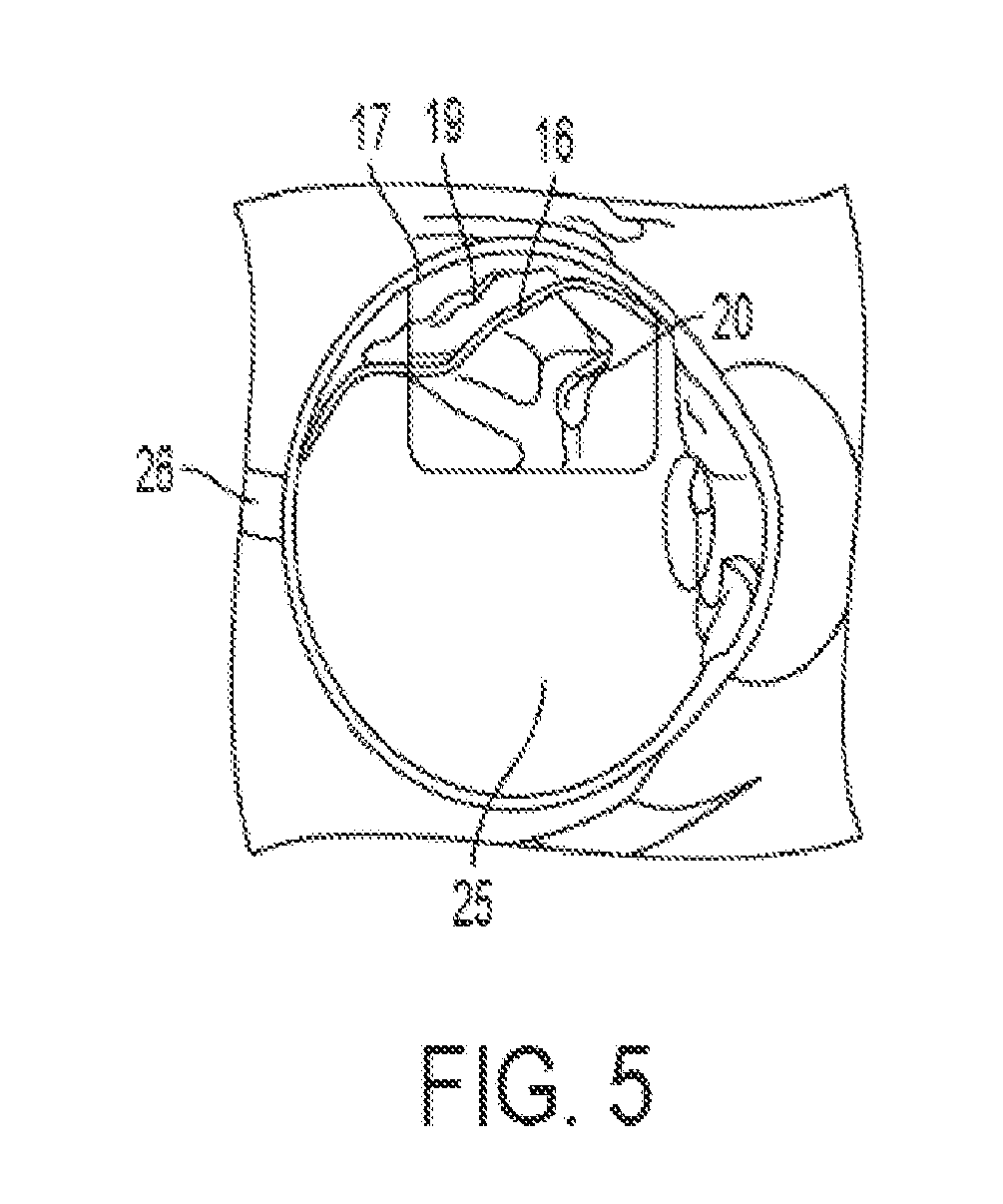Minimally-invasive method and apparatus for restructuring the retina
- Summary
- Abstract
- Description
- Claims
- Application Information
AI Technical Summary
Benefits of technology
Problems solved by technology
Method used
Image
Examples
Embodiment Construction
[0031]A retinal detachment is a separation of the retina from its attachments to its underlying supporting choroids tissue within the eye. Most retinal detachments are a result of an opening in the retinal wall due to a break, hole, or tear. The opening in the retina may allow the vitreous humor fluid to get in between the retina and the choroid. The fluid can force the retina away from the choroid causing blind spots where the retina has separated. Where the retina is weak, it will tear. As more of the vitreous collects behind the retina, the extent of the retinal detachment can progress and possibly involve the entire retina, leading to a total retinal detachment. A representative tear 20 is shown in FIG. 5 in which the retina 16 has separated from the underlying supporting choroid tissue 17. The tear 20 allows fluid 19 from the posterior chamber 25 to penetrate behind the retina 16 thereby separating the retina 16 from the underlying optic nerve 26. As fluid 19 builds up, the det...
PUM
 Login to View More
Login to View More Abstract
Description
Claims
Application Information
 Login to View More
Login to View More - R&D
- Intellectual Property
- Life Sciences
- Materials
- Tech Scout
- Unparalleled Data Quality
- Higher Quality Content
- 60% Fewer Hallucinations
Browse by: Latest US Patents, China's latest patents, Technical Efficacy Thesaurus, Application Domain, Technology Topic, Popular Technical Reports.
© 2025 PatSnap. All rights reserved.Legal|Privacy policy|Modern Slavery Act Transparency Statement|Sitemap|About US| Contact US: help@patsnap.com



